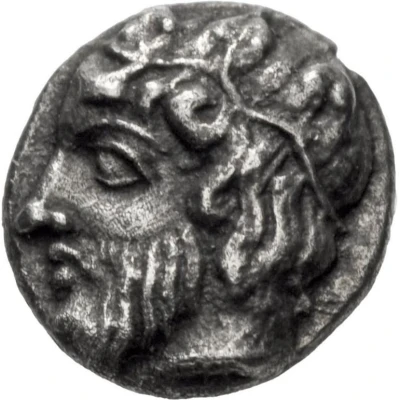


© Classical Numismatic Group, Inc.
Hemiobol 450 BC - 400 BC
| Silver | 0.38 g | 7.0 mm |
| Issuer | Myrhina (Aeolis) |
|---|---|
| Type | Standard circulation coin |
| Years | 450 BC - 400 BC |
| Value | Hemiobol (1⁄12) |
| Currency | Drachm |
| Composition | Silver |
| Weight | 0.38 g |
| Diameter | 7.0 mm |
| Shape | Round (irregular) |
| Technique | Hammered, Incuse |
| Orientation | Variable alignment ↺ |
| Demonetized | Yes |
| Updated | 2024-10-09 |
| Numista | N#435027 |
|---|---|
| Rarity index | 100% |
Reverse
Kantharos within incuse square.
Script: Greek
Interesting fact
The Hemiobol coin was used as a form of currency in ancient Greece, specifically in the city-state of Myrhina in Aeolis, and its design has been well-preserved in many surviving examples. One fascinating aspect of this coin is that it features an early example of a portrait of a deity, in this case, the goddess Athena, on one side, while the other side bears an image of a grapevine. This combination of symbols not only reflects the cultural and religious significance of Athena in ancient Greece but also highlights the importance of wine and agriculture in the region. The coin's design has been interpreted as a representation of the city's prosperity and its connection to the divine.



